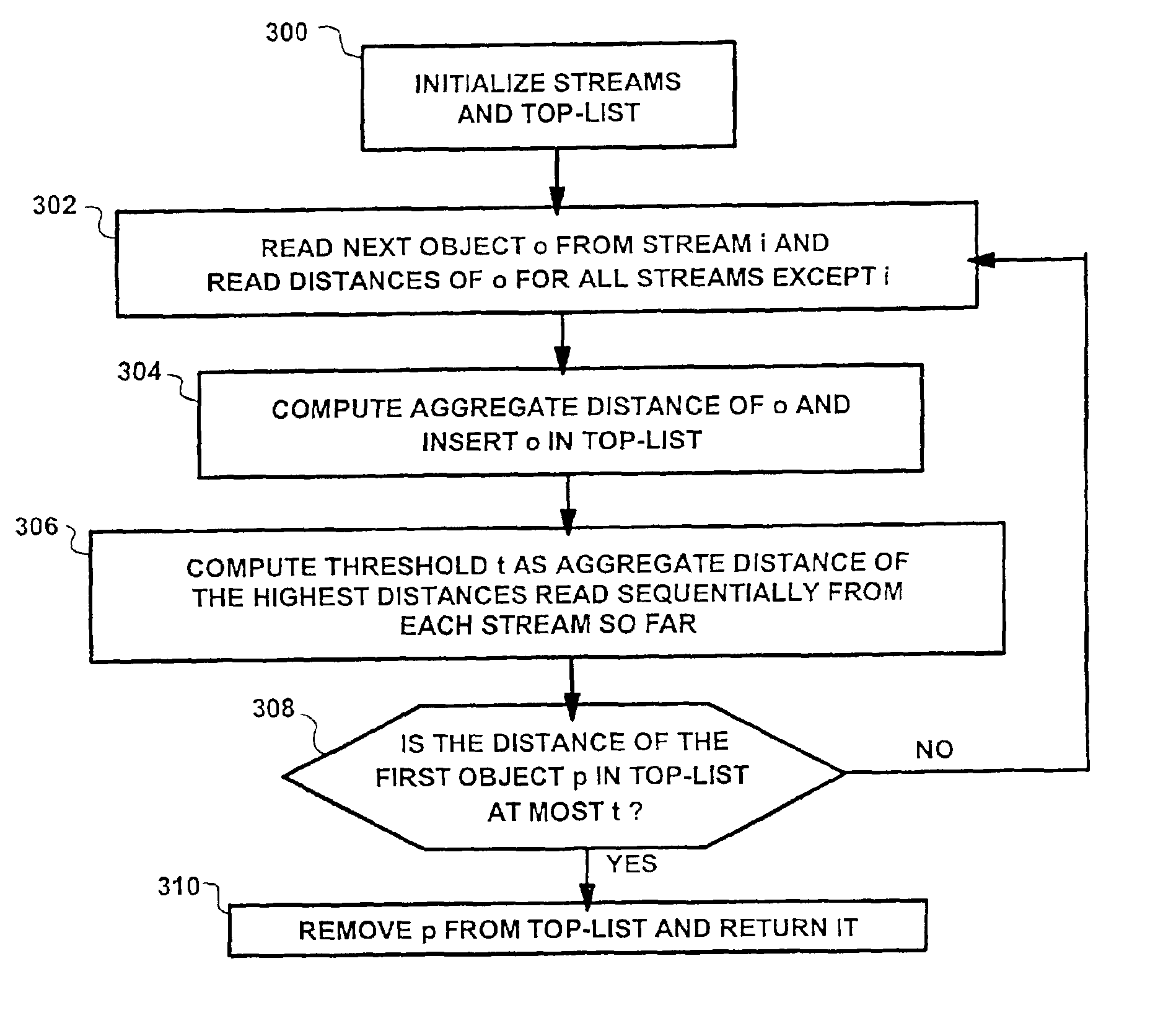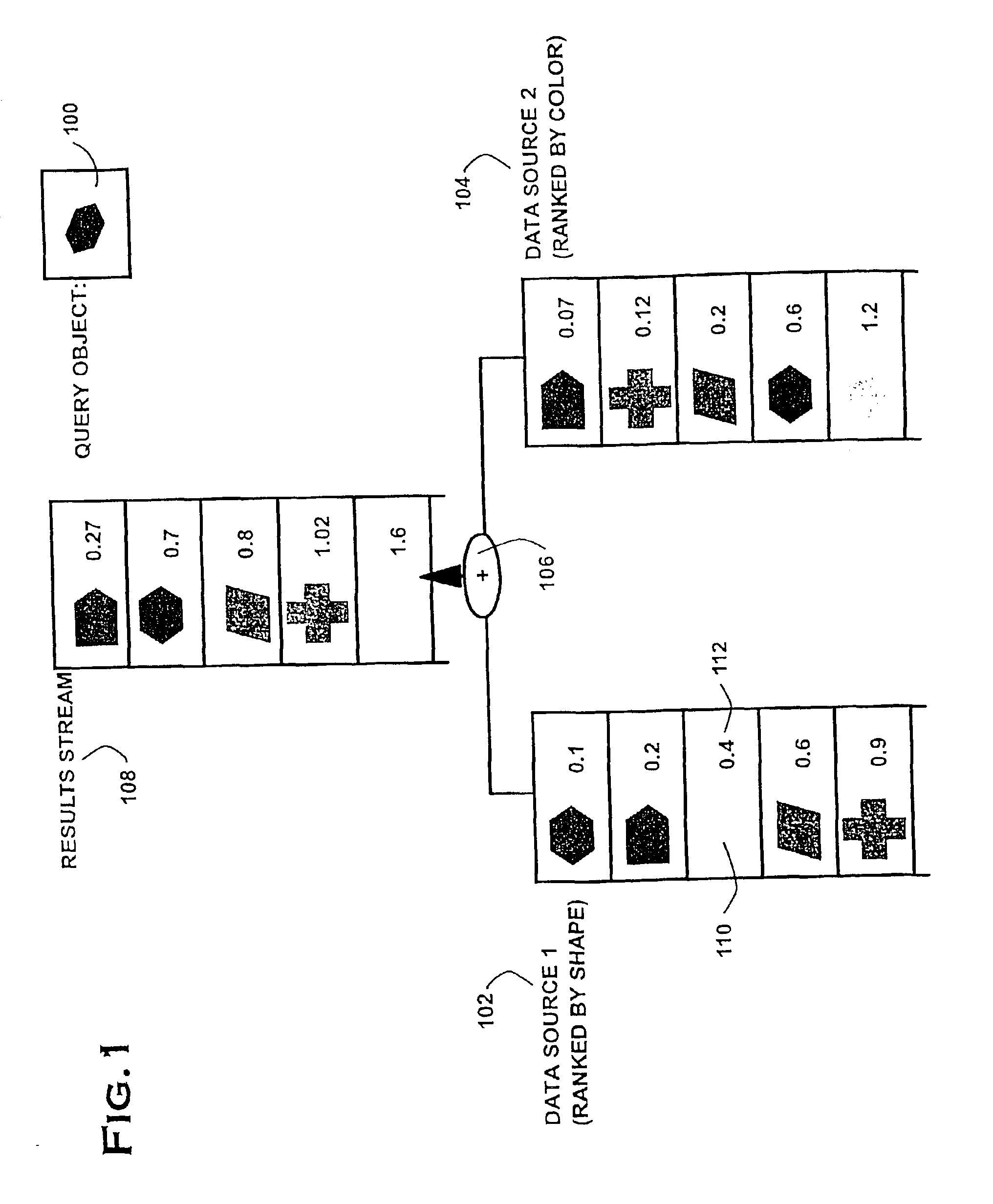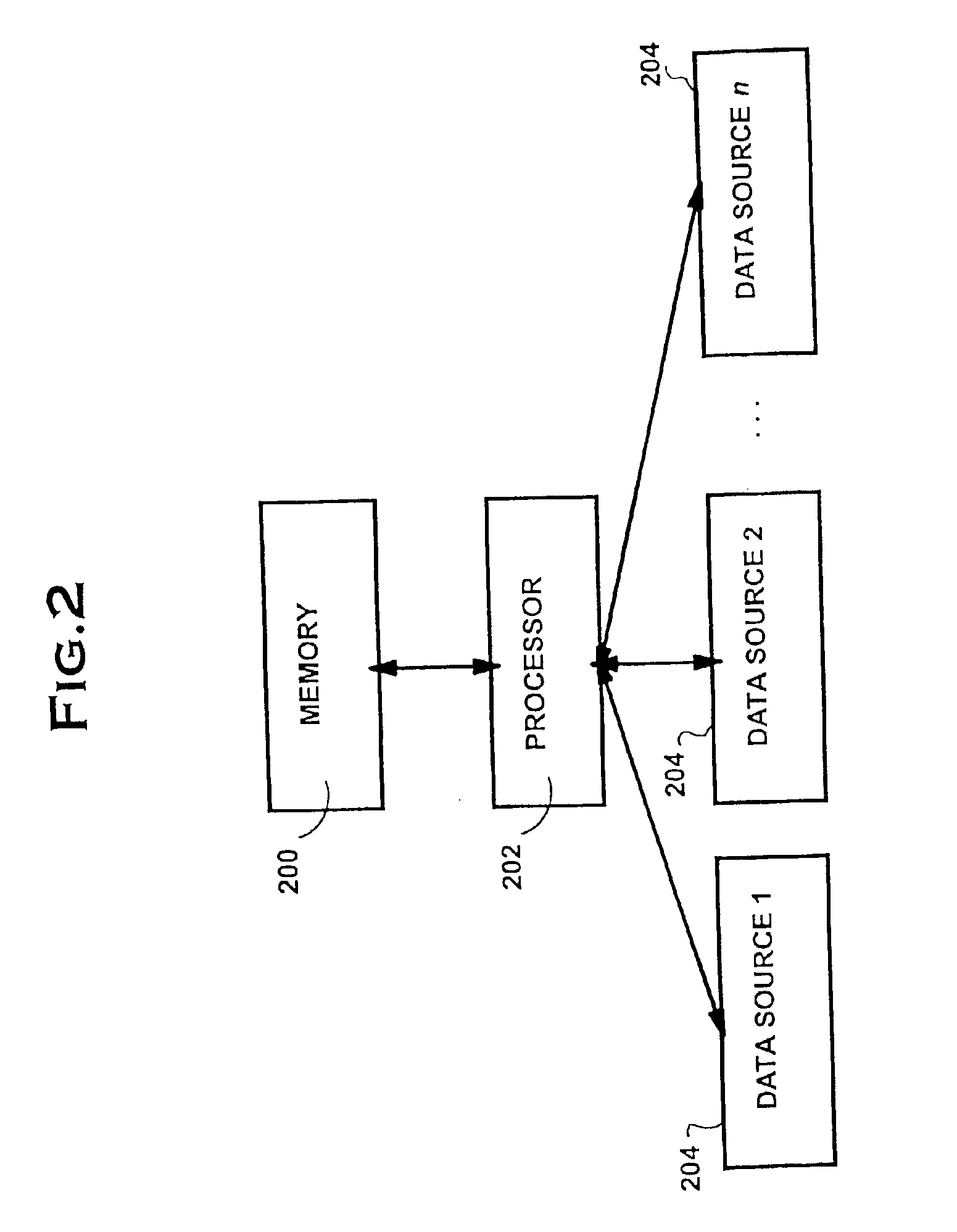Dynamic optimization of multi-feature queries
a query and multi-feature technology, applied in the field of multi-media database systems, can solve the problems of not being able to adapt to different access costs, not being able to reduce the overall number of ranked object reads, so as to minimize minimize the total query cost, and the effect of minimizing the overall query response tim
- Summary
- Abstract
- Description
- Claims
- Application Information
AI Technical Summary
Benefits of technology
Problems solved by technology
Method used
Image
Examples
first embodiment
[0112]steps 504 and 506 is illustrated in FIG. 10. In step 1001, the target location q is modified such that it is in distance radius from the current location x. The algorithm then estimates the number of sequential read accesses required to reach q and stores them in a variable reads1 for each stream i (1000). This estimate is obtained by using the inverse distance estimator and rounding to the next closest integer (1000). Step 1002 checks if all variables readsi are 0. If that is the case, the reads, of the stream for which the inverse distance estimator returned the largest value, is set to 1 (1004). In step 10061 the reads are issued to the streams similar to step 302 of TA. However, step 1006 is modified such that i is not picked arbitrarily but from the sequence 1, . . . , 1, 2, . . . , 2, . . . , d, . . . , d, where the number of 1s is given by reads1, and the number of 2s by reads2, and so on. In addition, step 1006 updates the local density and / or cost estimators after eac...
second embodiment
[0113]steps 504 and 506 is illustrated in FIG. 11. It interleaves both steps by constantly reevaluating the deviation from the desired path. The desired path is given by the line starting at x and continuing in direction v. In step 1100, the next expected distance is determined and stored in a variable disti for each stream i using the distance estimators. Then, the next possible location p(i) is calculated for each direction i (1102). The next possible location in direction i is defined as the point whose components are identical to the current location p except for the ith component which is set to p+disti. Step 1104 picks the direction with the smallest expected distance between p(i) and the desired path as the next read direction i. Step 1106 is similar to step 302 of TA. However, step 1106 additionally updates the local density and / or cost estimators after each sequential and random read access. Step 1108 is identical to steps 304 and 306 of TA. Step 1110 is a modified version ...
PUM
 Login to View More
Login to View More Abstract
Description
Claims
Application Information
 Login to View More
Login to View More - R&D
- Intellectual Property
- Life Sciences
- Materials
- Tech Scout
- Unparalleled Data Quality
- Higher Quality Content
- 60% Fewer Hallucinations
Browse by: Latest US Patents, China's latest patents, Technical Efficacy Thesaurus, Application Domain, Technology Topic, Popular Technical Reports.
© 2025 PatSnap. All rights reserved.Legal|Privacy policy|Modern Slavery Act Transparency Statement|Sitemap|About US| Contact US: help@patsnap.com



